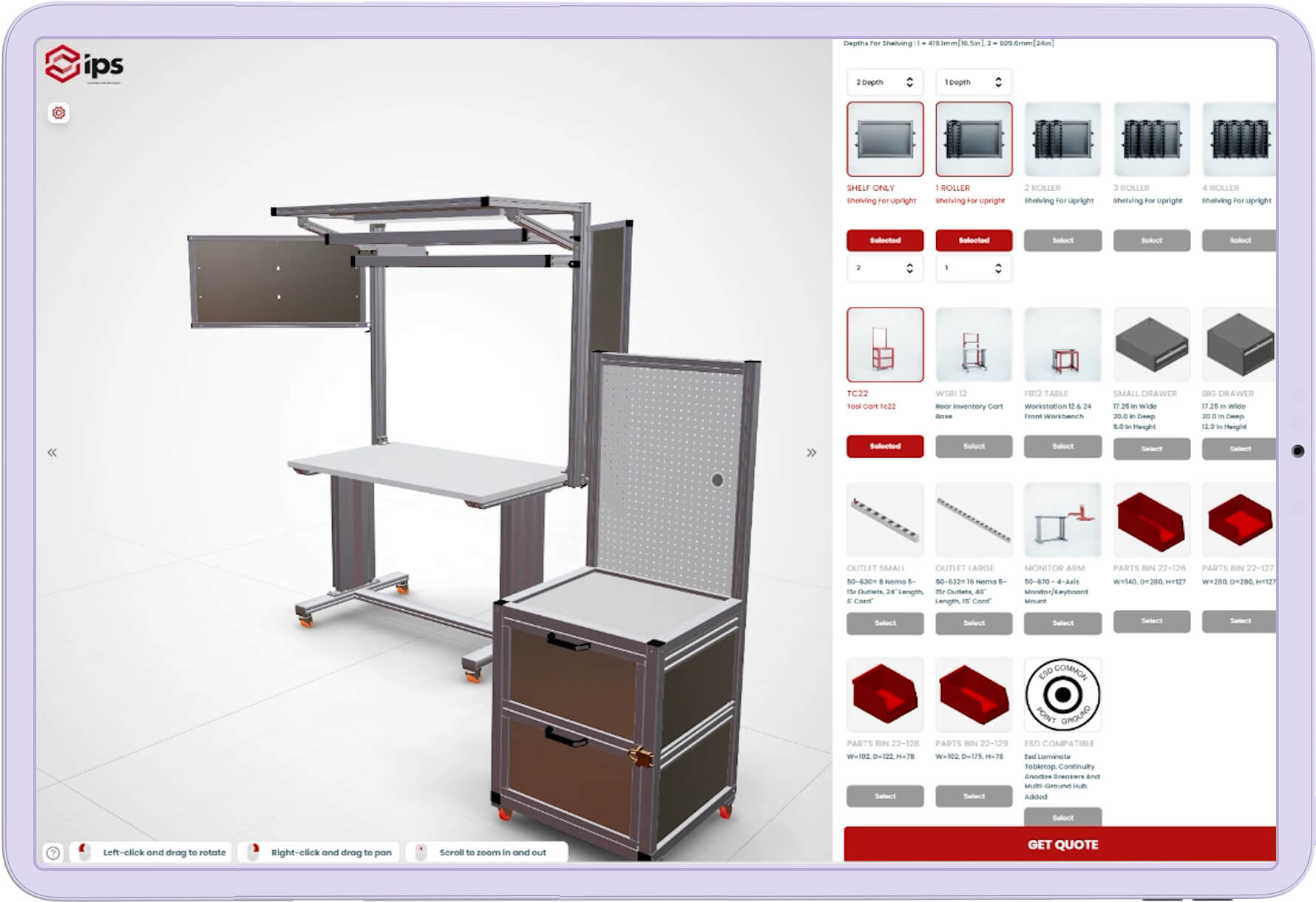Work Stations Configurator? How to Use It? A Complete Guide

Not having much luck designing your perfect workspace? Work Stations Configurator may be just what you need. This configurator creates a specifically designed workstation layout catering to the needs of any particular user.
If you find setting up a workspace that really works for you a little challenging, don’t worry—this guide will walk through how to use the Work Stations Configurator effectively.
By the end, you will know everything to organize an efficient and functional work area.
So, let us begin.
What is a Work Stations Configurator ?
A Work Stations Configurator is a dedicated tool aiming to help one arrange and design his or her ideal workspace. Setting up a new office or upgrading an existing one, or just designing a home workspace—the tool will help you customize and optimize your workstation as per your specific needs.
Key Features
Some of the major characteristics of Work Stations Configurator you should know include:
Be it increasing productivity, comfort, or having your workspace look organized; this tool gives a practical solution for that.
Now, let’s see how to use Work Stations Configurator.
How to Use Work Stations Configurator?
Here’s how to use the work stations configurator:
Step #1: Access the Configurator
First of all, you need to choose the right work stations configurator tool. There are lots of configuration tools available in the market, making it essential for you to choose the one that fulfills your needs.
Step #2: Select a Template or Start Fresh
You can either work with a pre-built template or start from scratch in the configurator. For a quick start, select one that is closest to what you need, such as an office desk setup or perhaps a lab station.
This allows you to start from some type of base that gives you a place from which to build. Otherwise, if you want full control over your creative effort, starting from a clean slate does indeed put you in a position to design your workstation exactly to your vision.
Step #3: Define Your Requirements
Now, you will have to establish the requirements. You will indicate the length, width, and height of your workspace such that every element you are adding is compatible with your real space. For custom needs, for example, you need one or two workstations or special equipment required there.
This information helps the configurator recommend most of the proper configuration elements and layouts that would fit your set-up best.
Step #4: Design Your Workstation
You can design a workstation with all your requirements in place. First, just add the different components of the workstation like desks, chairs, and shelves into the design area. Arrange them as you would like.
Normally, all configurators have the functionality changed option for features like color and material in front of your eyes. This would help in previewing how options will affect the look and functioning of a station.
Step #5: Review and Adjust
Once this is done—having your elements set in order and customized—the next step would be to spend a bit of time checking out the design. Check that all elements are well-placed so that the workstation will meet your needs. That could mean testing for space or functionality.
If anything goes wrong or if you feel that there is something that might need improvement, don’t hesitate to try a different arrangement by adding one more element if necessary.
Step #6: Save and Share
Once you have finalized your design, save it to your account or download it for reference in the future. This step is important if you want to go back into your design at a later stage or even send it to somebody else.
Share your design with colleagues or other stakeholders; the configurator subset used provides this sharing facility, so seek feedback.
Step #7: Order and Implementation
If the configurator allows ordering elements, you can order all elements directly through the tool and follow the instructions to complete your purchase. You can set up installation once you receive your items.
Depending on the complexity of what needs to be installed, you would either self-assemble the components or hire professional services in terms of installation.
Step #8: Feedback and Iteration
Finally, after you get your workstation set up, get user feedback that it will meet all your requirements by working according to expectations. In case there are issues or recommendations for improvements, visit again to change everything around.
All of this combines in an iterative process that helps refine the design in making a workstation, finally bringing into existence a workspace that’s functional and comfortable.
Conclusion
In conclusion, a Work Stations Configurator is a powerful tool for designing a workspace that perfectly fits your needs. By customizing your layout, visualizing it in 3D, and optimizing for comfort and efficiency, you can create a work area that enhances productivity and meets your specific requirements.
Ready to Design Your Perfect Workspace?
Now that you have a complete guide on how to use a Work Stations Configurator, why not see it in action?
Explore our detailed case study where we walk through a real-life example of a successful workstation transformation using this powerful tool. Discover how you can apply similar strategies to create your ideal workspace.


